Sea view
Marine spatial planning not only focuses on economic development but also cares about environmental protection and social benefits. Quang Nam has established coastal protection corridors and reorganized marine space according to established planning.

Coastal economic drivers
Recognizing the importance of marine space, the Quang Nam Provincial Planning for the period 2021 - 2030, with a vision to 2050, identifies the Eastern region including cities, towns, and coastal plain districts as the province's driving force with key economic sectors being marine economy, industry, trade, services, tourism, and agriculture .
Among the three development corridors of the province, it can be said that the coastal economic dynamic corridor (from the Da Nang - Quang Ngai expressway to the coast) is in a key position. The concentration of ecological industrial spaces, high-tech industry, green tourism and a chain of river and sea urban areas associated with seaports and Chu Lai Airport will create a breakthrough for the rapid and sustainable development of Quang Nam in the coming period.
Based on natural characteristics, it can be seen that Quang Nam sea space is divided into 2 quite clear areas with the natural boundary being Thu Bon river. In which, the coastal area north of Thu Bon river (Dien Ban town and Hoi An city) approached the development process earlier, thereby creating high added value but also leaving many consequences.

Not commensurate with potential
The 15km stretch of coastline between Dien Ban and Hoi An has been attracting the attention of investors for more than 20 years, due to its proximity to the vibrant urban areas of the Central region. In addition to the positive aspects of contributing to the socio-economic development, this investment “wave” has also brought about many shortcomings, with consequences that still exist today.
After decades, besides a few projects that were revoked on the coastal strip from Dien Ngoc (Dien Ban) to Cua Dai (Hoi An), there are still many unfinished or "on paper" projects. The fact that tourism projects are being implemented right next to the coast is considered by experts to be a significant cause of the persistent coastal erosion that has been going on for decades in Hoi An. Not to mention the "suspended" projects that have made the lives of people living along the coast difficult. It is worth mentioning that this whole area currently does not have a proper coastal park, although there are many projects planned in both the public and private sectors.
In the southern coastal area of Thu Bon River, thanks to the characteristics of large land fund favorable for construction, the current state is still pristine, the level of impact on people and compensation, site clearance is low, relatively favorable for attracting investment, so in recent years, it has attracted 2 very large-scale tourism projects, Hoiana and Vinpearl Nam Hoi An, along with continuing to expand and upgrade production scale infrastructure in industrial parks in Chu Lai Open Economic Zone.

According to the Department of Construction, the current situation of coastal space development in Quang Nam still faces many difficulties and is not commensurate with its potential. All coastal urban areas in the planning process have identified the important nature and function of tourism services. There is specialization depending on the characteristics and strengths of each region. For newly developed areas, ensure land funds for community spaces and public beaches; organize sea squares as large community centers in urban areas (Dien Ban, Hoi An, Duy Hai - Duy Nghia, Binh Minh, Tam Ky, Tam Tien...). Organize spaces interspersed with natural landscape conservation areas, with reasonable construction density, ensuring effective land use.
Reorganizing marine economic space

Associate Professor, Dr. Nguyen Chu Hoi - former Deputy Director General of the Vietnam Administration of Seas and Islands, said that when Quang Nam identified the coastal area as the driving force for the province's development, it could not just stay in the coastal area.
We need to form and change the mindset about coastal cities. We need to reorganize the marine economic space, strengthen regional linkages linking coastal areas with the sea to truly move towards the sea.
Associate Professor, Dr. Nguyen Chu Hoi - former Deputy Director General of Vietnam Administration of Seas and Islands
The planning for the North Central and Central Coast regions has just been approved by the Prime Minister. This planning focuses on developing coastal areas in the provinces and cities of Thua Thien Hue, Da Nang, Quang Nam, and Quang Ngai to become the driving force of the Central region of the country.
Accordingly, the provinces in the region need to continue to form and develop coastal urban systems, regional and international sea tourism and eco-tourism centers; national petrochemical and refinery industrial centers, automobile and mechanical engineering support industries; develop seaports and seaport services; build mechanical engineering and supporting industry centers in Chu Lai Open Economic Zone. Hoi An is also planned to develop into a regional and international sea tourism and resort tourism center, prioritizing the development of tourism products and services associated with the direction of night-time economic development.

Chu Lai Open Economic Zone with an area of over 27 thousand hectares spread over 3 districts and cities is considered the "nucleus" that determines the success or failure in organizing and using Quang Nam's sea space. With a "complex" of duty-free zones; industrial parks; ports and logistics areas; concentrated tourism - service areas; training and research centers; urban areas... plus rural residential areas that are retained, renovated and upgraded in association with tourism development, high-tech agricultural production, once materialized, will help about half of the province's coastal area create a strong transformation.
According to Acting Chairman of the Provincial People's Committee Ho Quang Buu, together with this economic zone, it is to form a space for developing coastal tourism in Duy Xuyen - Thang Binh connecting the Hoi An tourism space on the basis of promoting the natural values of rivers and seas. Building conference centers, trade centers, entertainment areas and resorts, high-class golf courses, and Olympic-standard sports facilities.
To sustainably develop marine space, in the process of planning and implementing planning, it is necessary to have complete and accurate data on marine space. In particular, marine planning must go first, enhancing the resilience of coastal infrastructure and public services to natural disasters and climate change response. First of all, development decisions must be based on the principle of "following nature".
Prof. Dang Hung Vo - former Deputy Minister of Natural Resources and Environment
[VIDEO] - Quang Nam's marine potential:
Preserving the identity of the coastal village
The space of coastal villages with many cultural values will be narrowed and eroded if there is no harmony between economic development and cultural preservation.
Narrowing cultural space
Dien Duong Ward (Dien Ban Town) is a locality with rapid urbanization. Dien Duong people are no longer interested in fishing but mainly switch to tourism, services and trade. As a matter of course, fishing festivals with singing, dancing, boat racing and boat racing no longer take place regularly.
From Dien Duong to Cam An and then Cua Dai (Hoi An City), coastal urban areas with high-rise buildings, resorts, and service areas spring up like mushrooms after the rain. There are two sides to this: the coastal infrastructure is being invested in more synchronously, creating a new look and developing the tourism, service, and trade economy of the land. On the other hand, the customs, habits, and cultural values of coastal communities will also fade away.
Mr. Tran Van Siem - Chairman of Duy Hai Commune People's Committee (Duy Xuyen) said that due to increasingly severe sea encroachment and erosion, people in Tay Son Dong and Trung Phuong villages are forced to find new places to live. The space of the fishing village is getting narrower. The fishing community, who were previously familiar with the activities, customs and practices of the fishing profession in the old village, when moving to another place and doing another job, the culture of the fishing village will certainly disappear.
Coastal people abandon fishing to find new jobs, putting the cultural values of coastal villages at risk of being lost. As long as coastal communities exist, there is still a sea cultural heritage. It is a great regret that coastal communities are gradually moving away from the traditional values of their ancestors.
Mr. Tran Van Siem - Chairman of Duy Hai Commune People's Committee (Duy Xuyen)
Conservation challenges
Mr. Truong Cong Hung - Head of the Department of Culture and Information of Thang Binh district said that as long as fishermen still live in the coastal village space, the coastal culture will continue to be passed down through each generation. The characteristics of lifestyle, beliefs, habits, and customs of the community will be enriched, adapted, and resonated with other cultural values over time, making it even more beautiful.



Mr. Hung said that in planning for tourism and coastal service development, state agencies need to consider preserving the space of coastal villages so that the community can still cling to the seafaring profession.
Many experts say that in planning and developing the marine economy, it is necessary to remember to preserve and maintain the human values of the coastal villages. If ignored, it will inevitably cause the coastal villages to be deformed in terms of landscape and traditional space, especially losing the cultural values of their ancestors.
In Hoi An City, the business community and local people have organized many activities to preserve the cultural space of the coastal village. Tan Thanh fishing village market (Cam An ward) with many experiences for tourists, is also one of the forms of preserving the coastal culture in the face of many challenges.
In the communes of Binh Duong and Binh Minh (Thang Binh), along with the implementation of large tourism and service projects, thousands of hectares of land were confiscated. The seafood markets that took place on the edge of the village waves no longer exist. The culture of "selling a little cheaper so that buyers can resell and make a little profit" of the coastal community will no longer exist.
[VIDEO] - Hat Ba Trao - a unique cultural feature of the Quang fishing village preserved and promoted by fishermen:
Exploiting marine tourism resources

Beach tourism… on shore
After many years of development, the coastline from Dien Ban to Nui Thanh has formed many international-class accommodation and resorts such as Four Season The Nam Hai, Hoiana, Vinpearl Resort & Golf Nam Hoi An, TUI Blue Nam Hoi An...
However, the Quang Nam sea tourism brand has only stopped at… onshore because there is almost no form of tourism and entertainment based on the sea and coastal space.
Mr. Van Ba Son - Deputy Director of the Department of Culture, Sports and Tourism acknowledged that Quang Nam's sea tourism development has not been commensurate with its potential. Sea tourism activities are mainly concentrated in Hoi An City. Tourism products are only limited to coastal exploitation. Coordination between sectors in building policies for sea tourism development is also not tight, while community sea tourism development activities are mainly spontaneous, unconnected and fragmented.
It is impossible to maintain purely accommodation products for sea tourism, but it is necessary to call for investment promotion in product systems based on the three pillars of culture - nature - people, which is an advantage of Quang Nam. Hoi An is one of 12 key destinations planned by the Ministry of Culture, Sports and Tourism to promote night tourism with the goal that by 2030, Hoi An must become a complex of night tourism products. Only by looking towards the sea can this be realized.
Mr. Nguyen Van Lanh - Vice Chairman of Hoi An City People's Committee
Many valuable lessons have been learned about coastal urban planning and marine space. After dividing the land into high-end resorts, the consequences are that people lose access to the sea, cannot use marine resources conveniently and more importantly - tourists are cut off from the residential community.
Associate Professor, Dr. Hoang Manh Nguyen - Vietnam Institute for Green Urban Research and Development
Community tourism development
Tam Thanh (Tam Ky) is a land blessed by nature with blue sea, golden sand and many cultural features of the coastal village that have been preserved by the people for hundreds of years. However, Tam Thanh really emerged when the murals appeared. Avoiding massive projects to welcome visitors, the local government soon had orientations for community tourism spots. Therefore, hotel projects, homestays, restaurants... are all built according to fishing village architecture, in harmony with the overall space of Tam Thanh coastal village.

Artist Tran Thi Thu (in Hanoi) - who has been involved in community art projects in Tam Thanh for more than 7 years said that the appearance of this coastal village is changing a lot due to tourism. And fortunately, the typical values of the coastal village are still intact. The community - those who directly benefit from tourism have raised awareness of preserving the environment and ecological landscape. The clearest proof is that community art activities over the years are still attractive, always being cared for, nurtured and renewed many times. Local authorities also consider this a mark for the overall orientation of developing marine tourism.
In 2023, Tam Thanh commune is one of three localities selected to pilot the project "Strengthening institutions and enhancing capacity for urban development in Vietnam" implemented by UN-Habitat under the sponsorship of the Swiss Federal Directorate for Economic Affairs in the period 2021 - 2025.

The focus of the project will be to renovate and expand the mural village, invest in infrastructure, create art works, nightlife spaces, and experiential activities on the river and at sea. After Tam Thanh, localities with beautiful beaches and long-standing cultural values of coastal villages are also taking the first steps on the journey of developing community tourism, such as Cua Khe village (Binh Duong commune, Thang Binh), Ha Loc beach (Tam Tien commune, Nui Thanh), Tam Hai island commune (Nui Thanh)....
Attracting dynamic businesses to invest to promote tourism development is in the master plan of these localities. The requirement for planning, land management and construction investment needs to be carefully researched and calculated to avoid breaking the structure of the coastal village is a requirement.
Quang Nam should consider planning resorts, hotels with entertainment areas for tourists, while also serving the needs of local people. There should be no massive construction of luxury villas along the coast or taking up all the most valuable land for tourism.
Associate Professor, Dr. Hoang Manh Nguyen - Vietnam Institute for Green Urban Research and Development
Diversity of marine ecosystems
With a fishing ground of 40,000 km2, scientists assess that Quang Nam sea has diverse marine biological resources with many rare species of animals and plants. The most prominent are Cu Lao Cham area (Tan Hiep commune, Hoi An city) and An Hoa cape (Nui Thanh).

Cu Lao Cham area has a sea area of 21,888 hectares, with 165 hectares of coral reefs, 500 hectares of seagrass beds, 47 species of seaweed, 4 species of seagrass, 66 species of mollusks that depend on coral reefs, 4 species of lobsters and about 200 species of coral reef fish, 342 species of beneficial plants...
An Hoa Cape area also has nearly 1,000 hectares of seagrass beds, with two main types of coral reefs: fringing reefs along islands and base reefs on shallow beaches and submerged hills. Seagrass is distributed over nearly 200 hectares, concentrated in the coastal tidal areas of Tam Giang, Tam Hai and Tam Quang communes.
[VIDEO] - Cu Lao Cham Marine Reserve:
These potentials and advantages were soon given attention by all levels and sectors and given priority mechanisms for conservation and development. In 2003, Quang Nam became the first locality in the country selected by the Ministry of Natural Resources and Environment to pilot the application of the integrated coastal zone management model using state budget resources, focusing on Hoi An City and Nui Thanh.
Currently, along with the effectively operating Cu Lao Cham marine reserve, the Tam Hai coral reef areas, Tich Tay water coconut forest (Tam Nghia), Ba Dau Tam Tien reef (both in Nui Thanh); Ky Tran Binh Hai reef (Thang Binh); Duy Hai seaweed sandbank, Hong Trieu Duy Nghia aquatic seedling ground, Tra Nhieu Duy Vinh water coconut forest (both in Duy Xuyen); Cam Thanh water coconut forest, Cam Kim aquatic seedling ground (Hoi An) are receiving attention from local authorities. The marine conservation area in Quang Nam has increased to more than 550 km2.

According to the assessment of the Ministry of Natural Resources and Environment, the key point in protecting Quang Nam’s marine resources and environment is to mobilize the community’s cooperation. Through propaganda activities, models and projects, people’s awareness has changed positively. They have begun to take action to protect their own “source of life”.
Mr. Nguyen Xuan Uy - Vice Chairman of Tam Tien Commune People's Committee (Nui Thanh) said that the Ba Dau Reef Aquatic Resources Management Community Group in Tam Tien Commune was assigned by Nui Thanh District People's Committee to manage 64 hectares of sea surface area. The goal is to protect the marine ecosystem and coral reefs, aiming to regenerate aquatic resources for sustainable exploitation.
“Recently, this community group has placed buoys around the management and protection area. At the same time, it has established professional groups, especially patrol groups, to promptly detect violating boats and promptly propagate and remind. In addition, protecting the marine environment is also a priority and concern of the community group. Members regularly mobilize people to clean up the beach and the Tam Tien fish market area. Fishing boats are equipped with trash bins to collect waste from activities at sea and bring it ashore for disposal,” said Mr. Uy.

Mr. Nguyen Van Vu - Deputy Director of Cu Lao Cham Marine Protected Area Management Board said that since 2009, Cu Lao Cham has launched a movement to say no to plastic bags. Then, in 2018, the movement against plastic waste and single-use plastic continued to be implemented. The encouraging signal is that the business community, people and tourists have responded and participated actively. Many businesses have integrated the activity of cleaning up the seabed into their tourism products.
“Every month, the reserve and tourism companies clean up waste, especially in areas where tours and diving are organized. Through monitoring plastic waste on beaches and coral reefs, the marine environment is recovering positively,” said Mr. Vu.
[VIDEO] - People of Tam Tien commune (Nui Thanh) regularly clean the beach:
Another bright spot in the awareness of marine conservation associated with exploitation is that people have eliminated destructive fishing practices and do not catch seafood that is not large enough for exploitation or in the breeding season. To continue to protect, promote the effectiveness and sustainable use of the marine ecosystem, Quang Nam is petitioning the Ministry of Natural Resources and Environment for policies on marine conservation in some reefs in the districts of Thang Binh, Nui Thanh and Duy Xuyen.
Quang Nam province's planning for the period 2021 - 2030, with a vision to 2050, also clearly defines the marine conservation strategy. Accordingly, Quang Nam will establish a new Thu Bon River Lower Wetland Reserve and Tam Hai Marine Reserve. This is a suitable orientation, close to reality when the marine resources of these two areas are facing many challenges, especially climate change and environmental pollution. In particular, the Thu Bon River Lower Wetland Reserve plays an important role, being a buffer zone for the Cu Lao Cham - Hoi An World Biosphere Reserve.
Source










![[Photo] Hanoi morning of October 1: Prolonged flooding, people wade to work](https://vphoto.vietnam.vn/thumb/1200x675/vietnam/resource/IMAGE/2025/10/1/189be28938e3493fa26b2938efa2059e)

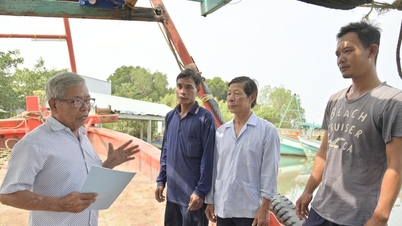

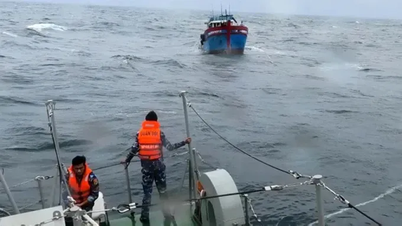




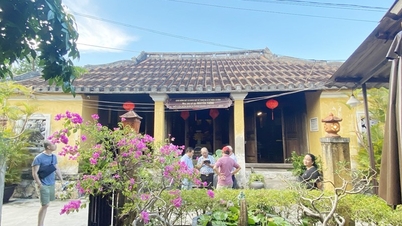

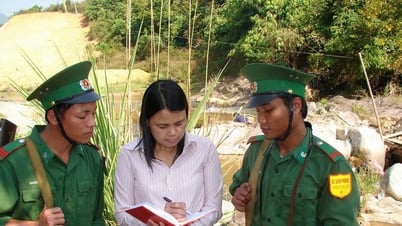
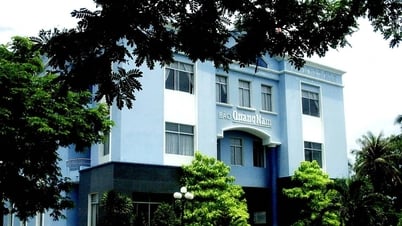
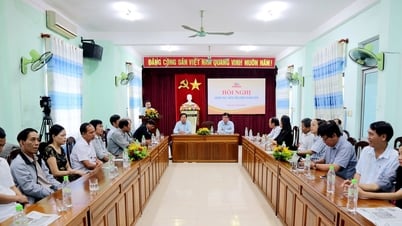











![[Photo] Panorama of the cable-stayed bridge, the final bottleneck of the Ben Luc-Long Thanh expressway](https://vphoto.vietnam.vn/thumb/1200x675/vietnam/resource/IMAGE/2025/9/30/391fdf21025541d6b2f092e49a17243f)







































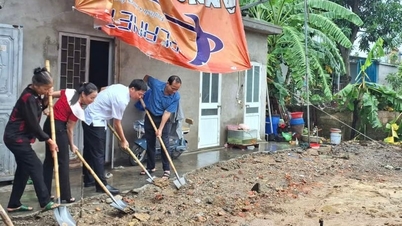

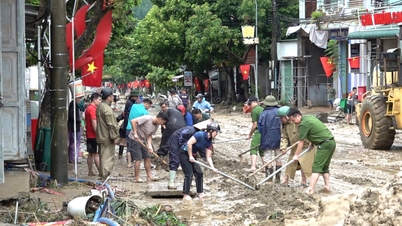

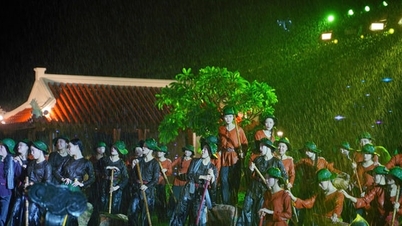

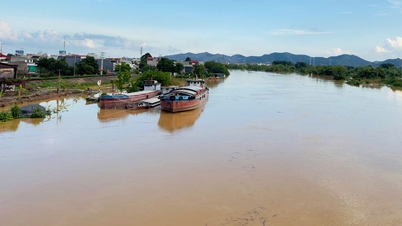















Comment (0)